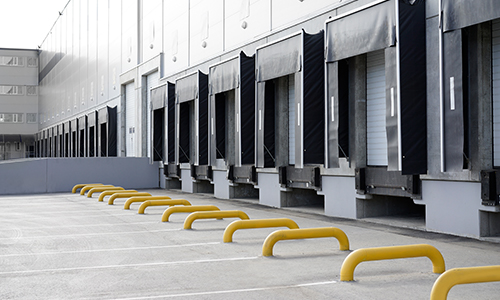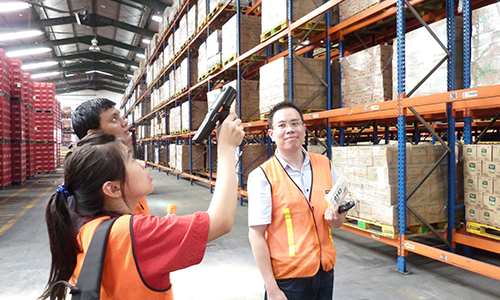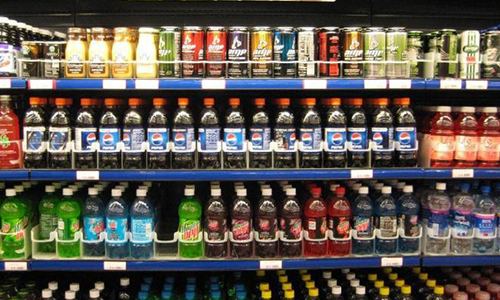How long to implement a WMS System?
[vc_row row_scroll_icon="no"][vc_column][vc_empty_space height="24px"][vc_column_text]Implementing warehouse management system requires several steps to ensure its success. It's not just the system as the system usually is ready to be deployed within days. The other requirement however, requires more time to prepare. Let's break it down. Gap Development The first step of WMS implementation is to get a gap analysis between LARGO and your existing business process. We need to make sure everything is covered and ensure the flow from start to finish. This process usually involves warehouse team, finance, IT, ERP consultant and management. This step usually take around 2 - 8 weeks to complete. Hardware Purchase We also need several hardware to support WMS project such as Server, Wireless Network, Mobile Computers and Barcode Printers. Some of these thing requires 8 - 10 weeks to purchase and install, so please be prepare to factor in these into your timeline. Integration, Data Migration and Data Sanitation IF you need to connect WMS with your ERP or eCommerce system, then we will need to have an integration work together with your ERP consultant. This job including Blue Print / design, development, testing and go live. We also need to migrate some data from your existing system, such as master files, tables, etc. Sometimes, existing data also requires a sanitation process to remove unwanted/unused data. This process can take up to 4 - 8 weeks as well. Warehouse Preparation Items in the warehouse needs to be re-labeled and re-registered to the new system. Each bin location also must be labeled. Depending on the number of stock in the warehouse, this process can take up to 4 - 8 weeks as well. Training Once everything is ready, we need to train every stakeholders in the company which can take up to 1 week for both classroom training and field training. After the training, we take the system to Go Live! So the conclusion, to implement LARGO Warehouse Management System, we needs around 2 - 4 months to complete. Contact our team to discuss more on the timeline and what are the thing you need to prepare before implementing WMS.[/vc_column_text][/vc_column][/vc_row]...
COVID-19
As we all know, during this Covid-19 pandemic times, Jakarta and most major cities in Indonesia, has implemented a Circuit Breaker initiative which limits the movement of people to reduce virus spread. We at Largo has followed these rules and actively participate in battling the virus spread in our environment. Therefore, WFH (Work From Home) is being applied since the beginning of this April 2020. We expect there will be some slow down or hiccups in our service to all our customer mostly who required us to physically visit their sites. We apologise for the inconvenience. However, for activities that can be done through remote / online resources, we are 100% active and ready to provide you with any meetings, presentation, demo, training, etc. So, let's do that. Let's keep our business roll while still helping the world to break the virus spread in Indonesia. Stay Safe. Stay Healthy....
Choosing the Right Mobile Computer for WMS
[vc_row row_scroll_icon="no"][vc_column][vc_empty_space height="24px"][vc_column_text]Mobile Computer or some call it PDT, HHT, RF, Handheld...
Existing Barcode vs New Barcode
[vc_row row_scroll_icon="no"][vc_column][vc_empty_space height="24px"][vc_column_text]We often come across question from our client "Can we use our existing barcode on the product in the warehouse" ? Well, the simple rule in the warehouse is that we need a UNIQUE barcode for each unit of measurement which can be a carton or a pallet. This unique barcode will help us to identify individual FIFO, expiry date, batch, production number and other important information. Product barcode is usually NOT UNIQUE. It means, for every Coca-Cola can, the barcode will all be the same. And don't forget that this barcode lays on item level, which is rarely the case for warehouse operation. That's why, when a product comes in to the warehouse, during Tally process, we put a new unique barcode for each carton or pallet. The barcode then will be associated with information required so now every carton or pallet has a unique information attached to its barcode. This information will continue being updated along the way during every warehouse operation such as put away, picking, stock take and delivery. If you have a unique case or need to discuss how to use barcode in your warehouse, let us know and we will be very happy to help.[/vc_column_text][/vc_column][/vc_row]...






